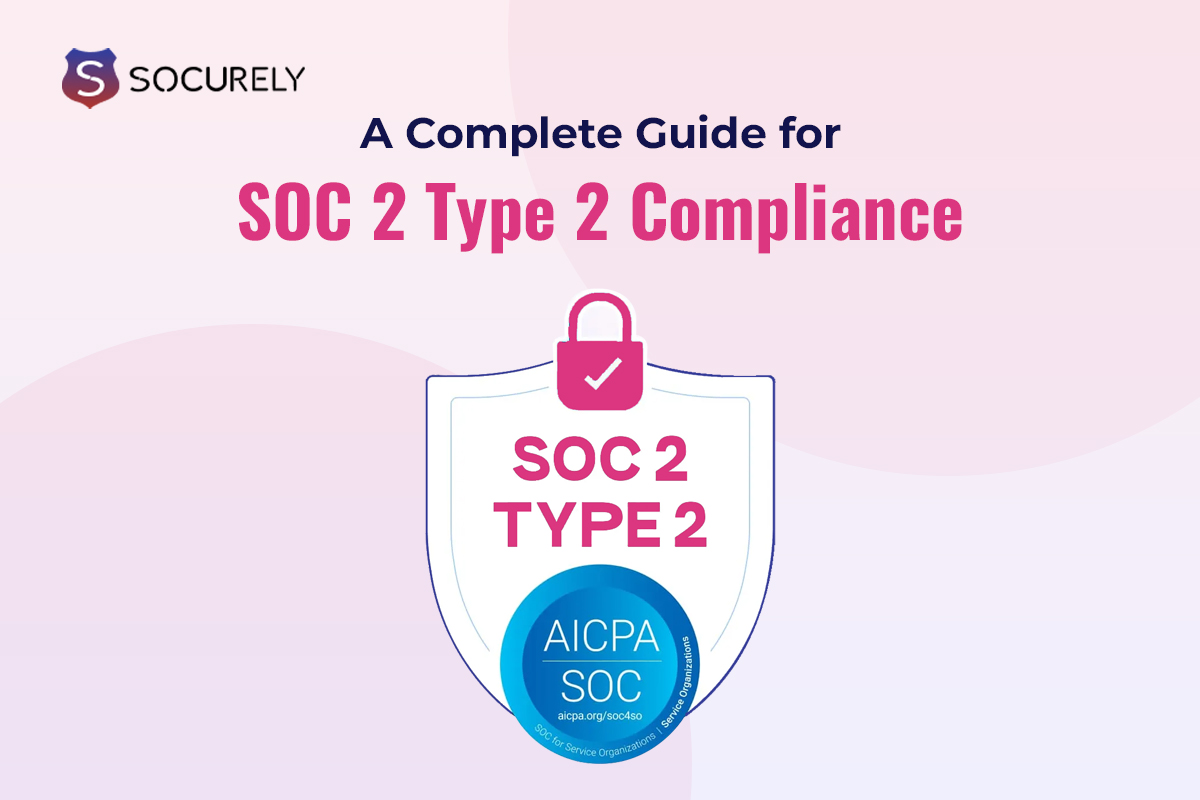Did you know that in 2023, 60% of companies experienced at least one data breach due to inadequate security controls? Not just that! TrustArc found that 92% of consumers have privacy concerns and prefer companies with strong data protection measures.
These reports highlight the importance of robust data security practices achieved through SOC 2 Type 2 compliance.
So in 2024 ensuring data security and privacy is more critical than ever. Achieving SOC 2 Type 2 compliance is a significant step for businesses aiming to build trust with clients and partners. But what exactly is SOC 2 Type 2 compliance, and how can you achieve it efficiently? This guide will break it all down for you.
What Is SOC 2 Type Compliance?
SOC 2 (System and Organization Controls 2) is an audit process that evaluates a company’s information systems relevant to security, availability, processing integrity, confidentiality, and privacy. SOC 2 Type 2 compliance specifically assesses the effectiveness of these controls over some time, typically six months to a year.
The goal of SOC 2 Type 2 compliance is to ensure that your organization is consistently adhering to best practices in data management and security. Unlike Type 1, which is a snapshot of controls at a specific point in time, Type 2 demonstrates that your processes are reliable and effective over an extended period.
SOC 2 Type I Vs. SOC 2 Type II
- SOC 2 Type I: This report assesses the design of controls at a specific point in time. It’s a one-time evaluation that shows the controls are suitably designed to meet relevant trust service criteria.
- SOC 2 Type II: This report evaluates the operational effectiveness of the controls over some time, usually ranging from six months to a year. It provides evidence that the controls are not only well-designed but also function effectively in practice.
For businesses aiming to build long-term trust and demonstrate an ongoing commitment to data security, SOC 2 Type 2 compliance is often more valuable.
What Is Included In the SOC 2 Type 2 Report?
The SOC 2 Type 2 report is comprehensive and includes several key components:
- System Description: An overview of the system used to process data.
- Management Assignment in Writing: A statement by the company’s management regarding the fairness of the system’s description.
- Auditor Opinion: An independent auditor’s opinion on the suitability and effectiveness of the controls.
- Control Testing: An in-depth evaluation of how the controls were tested and the results of these tests.
How Can Businesses Use SOC 2 Type 2 Audit Report?
Businesses can leverage their SOC 2 Type 2 audit report in several ways:
- Higher Standards Of Security- SOC 2 Type 2 Reports can promote advanced protection while reducing cyber risks and fraud.
- Build Trust with Clients and Partners: The report demonstrates that your company adheres to high standards in data security, making you a trustworthy partner.
- Competitive Advantage: In industries with a major concern on security, having SOC 2 Type 2 compliance can set you apart from competitors.
- Regulatory Compliance: It helps in meeting regulatory requirements, ensuring that your business avoids potential fines and penalties.
- Internal Improvements: The audit process often identifies areas for improvement, helping your company enhance its internal controls and processes.
How To Become SOC 2 Type II Compliant In 2024?
Ready to make 2024 the year you achieve SOC 2 Type II compliance? It might sound like a daunting task, but breaking it down into manageable steps can make the process a breeze. Let’s dive into how you can secure your data and build trust with your clients through SOC 2 Type II compliance.
Define Your SOC 2 Type 2 Scope
First things first, you need to define your SOC 2 Type 2 scope. SOC 2 compliance revolves around the Trust Service Criteria (TSC):
- Security: This is mandatory. The rest are not mandatory.
- Availability
- Processing Integrity
- Confidentiality
- Privacy
Imagine you’re running a cloud-based service. Availability would be a priority to ensure your service is always accessible to clients. If you’re in fintech, Processing Integrity would be crucial to ensure the accuracy and completeness of transactions. Most SaaS businesses focus on Security, Availability, and Confidentiality.
Gather Evidence of Controls – Preparation Stage
Now, let’s roll up our sleeves. The preparation stage involves implementing controls, testing them, identifying gaps, and fixing them. This might sound like a lot, but it’s all about proving that your processes are solid over time.
Think of it as preparing for a big exam. You wouldn’t just study the night before, right? You’d review your materials, test yourself, and address any weak spots. Similarly, you’ll need to gather evidence of your controls’ effectiveness over several months.
Typically, this process is spearheaded by an Infosec Officer or CTO, who might spend around 300 hours ensuring everything is in place. Sounds overwhelming? Don’t worry; automation tools can help streamline this process, making it more manageable and less error-prone.
Automate and Simplify Compliance
Why do things the hard way when there’s an easier path? Compliance automation tools like Socurely can save you hundreds of hours by automating audit preparation and evidence collection.
Here’s how it works:
- Integration: Socurely integrates with your cloud systems to map all entities and verify risk status.
- Risk Library: Use the risk library to identify relevant SOC 2 controls and run automated checks.
- Evidence Collection: Automatically capture evidence and store it in an audit-friendly manner.
Think of it as having a personal assistant that keeps track of everything for you. This way, you can focus on running your business while ensuring compliance is maintained.
Partner with the Right Auditor
Choosing the right SOC 2 Type 1 auditor is like picking the right partner for a dance competition. You need someone who understands your moves and can help you shine on the dance floor. Look for an auditor with experience in your industry, who can work within your timelines, and is open to collaboration.
Whether you choose a Big Compliance firm, a specialized CPA firm, or an individual CPA, the key is to ensure they are a good fit for your organization. A well-chosen auditor will help you get an unqualified report, meaning your compliance processes meet the required standards without exceptions.
Ready for the Audit? Do a Readiness Assessment
Before jumping into the actual audit, conduct a SOC 2 readiness assessment. Think of it as a preparation! This will help you ensure all your controls are in place and functioning correctly, so you’re fully prepared for the real audit.
Get SOC 2 Type 2 Compliance Reports With Socurely
For businesses aiming to achieve SOC 2 Type 2 compliance quickly and efficiently, using a specialized platform like Socurely can be a game-changer. Socurely offers comprehensive compliance solutions, including readiness assessments, control implementation guides, and access to experienced auditors. By leveraging their expertise, you can ensure a smooth and successful compliance journey.
FAQ-
What Is the Duration of SOC 2 Type 2 Report?
The duration covered by a SOC 2 Type 2 report is typically six months to a year. This period allows auditors to evaluate the operational effectiveness of the controls over time.
What Is the Cost for Preparing SOC 2 Type 2 Report?
The cost of preparing a SOC 2 Type 2 report varies depending on the size of the organization, the complexity of the systems, and the scope of the audit. It can range from $20,000 to $100,000 or more.
Which Is Better, SOC 2 Type 1 or Type 2?
SOC 2 Type 2 is generally considered more valuable than Type 1 because it demonstrates ongoing compliance and the operational effectiveness of controls over some time. However, the choice depends on your business needs and the level of assurance you want to provide to stakeholders.
Conclusion
SOC 2 Type 2 compliance is a significant milestone for any organization. It not only ensures robust data security practices but also builds trust and confidence among clients and partners. By following the steps outlined in this guide and leveraging tools like Socurely, you can streamline your compliance journey and enjoy the numerous benefits that come with being SOC 2 Type 2 compliant.







